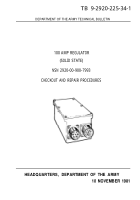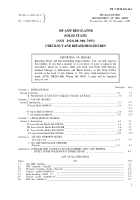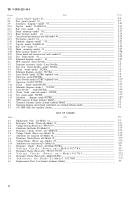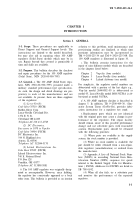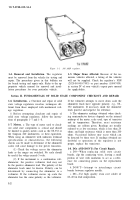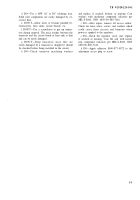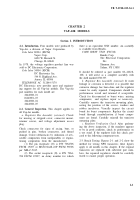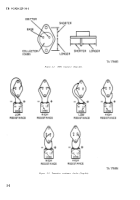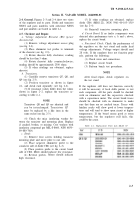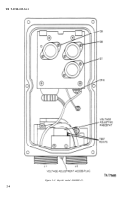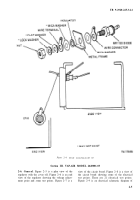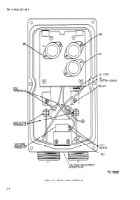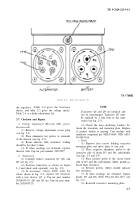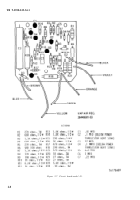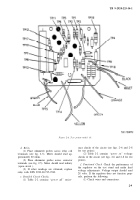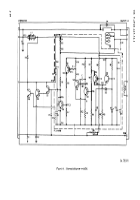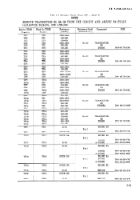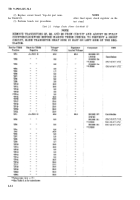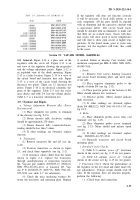TB-9-2920-225-34-1 - Page 7 of 70
TB 9-2920-225-34-1
CHAPTER 2
VAP-AIR MODELS
Section I. INTRODUCTION
2-1. Introduction.
Four models were produced by
Vap-Air, a division of Vapor Corporation.
Code Ident
80234 (FSCM)
Vapor Corp.
6420 W. Howard St.
Chicago, IL 60648
In 1978, the voltage regulator product line was
sold to DC Electronics Corporation.
Code Ident
34904 (FSCM)
DC Electronics Inc.
544 N. Highland Ave.
Aurora, IL 60506
TELEPHONE
AC 312844-5170
DC Electronics now provides parts and engineer-
ing support for all Vap-Air models. The Vap-Air
part numbers for each model are:
26440001-01
26440001–03
26440001-04
26440001-05
2-2. General Inspection.
This chapter applies to
all Vap-Air models.
a. Regulator Box Assembly (external).
Check
for missing or stripped cover, connector mount,
retainer screws, and voltage adjustment access
plug.
Check connectors for signs of arcing, bent, or
pushed in pins, broken connectors, and thread
damage. Correct deficiencies by utilization of serv-
iceable components from unrepairables or requisi-
tioning components from the manufacturer.
(1) The pin receptacle (J2) is P/N 7064706
FSCM 19207 or MS3102A28-22P FSCM 96906
per MIL-C-5015.
(2) The socket receptacle (Jl) is P/N 7064-
706 FSCM 19207, an Army number for which
there is no equivalent NSN number. An assembly
is available from Bendix.
CODE IDENT 77820
(FSCM)
Bendix Corp.
The Electrical Components
Div.
Sherman Ave.
Sidney, NY 13838
It should be ordered as part number 60–42228-
10S; it will arrive as a complete assembly with
the shell marked 8701337.
b. Regulator Box Assemblly (internal).
If water
leakage or corrosion is detected, it is possible that
extensive damage has been done and the regulator
cannot be easily repaired. Components should be
performance tested and retained if acceptable.
Check for disconnected or burnt wires, missing
components,
and replace repair as necessary.
Carefully remove the transistor mounting plate,
noting the position of the screws, washers and
rubber insulators. Visually inspect the circuit
board for burnt components. Replace the circuit
board through cannibalization if burnt compo-
nents are found. Carefully reinstall the transistor
mounting plate.
c. Regulator Verification Check.
After perform-
ing the above inspection, if the regulator appears
to be in good condition, check its performance on
a test stand. If the regulator fails this check, pro-
ceed to the following component tests.
2-3. Bench Testing. Figures 2–1 and 2–2 show the
method for testing NPN transistors; these figures
apply to all models in this chapter. If the original
transistors are replaced with substitute part num-
bers, the repaired regulators should be carefully
tested to ensure proper operation.
2-1
Back to Top

